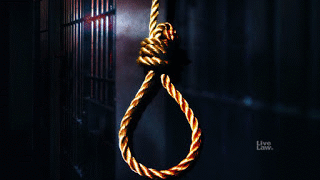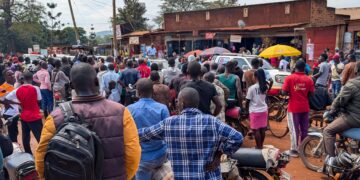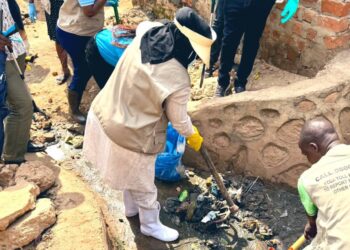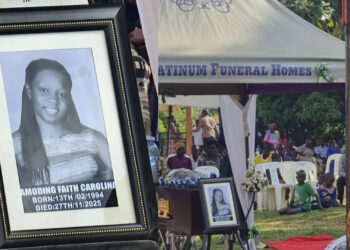Government treated mosquito nets are under mounting pressure from fishing, poultry keeping, cultivation and sand selling businesses. Here, our PARROTS UG undercover team recounts experiences visiting Makindye Ssabagabo municipality in Wakiso district where mosquito nets were recently distributed- all is not necessarily as it seems.
At the beginning of this year, Makindye Ssabagabo had it’s share on distribution of treated government mosquito nets in the fight against the spread of Malaria fever.
However, there has been an endless stream of negative stories about the abuse of the gov’t mosquito nets by many farmers and fishermen across the country, which was perhaps why our team was dispatched to survey Makindye Ssabagabo municipality excited to hear some positive news of change.
Makindye Ssabagabo formerly known as Kyadondo South county is one of the areas in Wakiso district gifted with evergreen wetlands, rivers and man made water trenches commonly known as ‘Emyala’ such as the Lubowa wetlands which act as the boundary between Kanyanya and Lubowa, Zzana wetlands (enhroached on by humans), Nyanama wetlands among others. Because of these wetlands, the area is fond of flooding causing low flow waters hence give a good habitat for mosquito larvae and pupae.
Established in August 2015, this place is so historical, its the only municipality in Uganda that was elevated from a sub county status to a municipality status without becoming a Town Board and Town Council first.
It is one of the fastet growing municipality in Uganda and the highest densely populated urban centre in Uganda with an estimated population of 360.000 people with the highest percentage being the youth.
This area is a home of prominent political figures and city businessmen like the first municipal MP Emmanuel Ssempala Kigozi aka Ssajalyabeene, incumbent MP Dr. David Sserukenya, popular Uganda cranes footballer Obua among others.
With the first class infrastructures like skyscrap buildings erected daily, roads, schools and Five Star hotel, one would not be marked wrong calling Ssabagabo a Muyenga of Wakiso district.
Local leaders and the media proudly talk about this place.
Curious to see this precious municipality, our dispatched team spent most of the time monitoring businesses, sanitation and hygiene, social and economic development of the area specifically in: Bunamwaya (Nyanama); Ggangu, Kikajjo – Namasuba, Ndejje -Zzanta among others as well as having a personal feel of the growing municipality.
During this undercover visit, it was realised that many residents abuse mosquito nets that were provided to them by the government in pursuit to fight against the shooting prevalence of Malaria fever.
This was so common in areas of Kibutika in Mirimu Zone Zzanta parish, Lubugumu, Kibira Zone, Kikajjo Namasuba, Nyanama- kisilamu and areas around Movit and Zzana weekly market.
In all these areas, mosquito nets were seen being used in fencing agricultural lands, covering sand and in building shelter structure for birds like chicken, ducks and pigeons.
Disappointed about the actions, our team asked one of the farmers (name not known) who was found harvesting bitter tomatoes/ Ethiopian eggplant locally known as Nakati why she was misusing the nets to fence her garden. She yelled to our team questioning: ‘Lwaki mubuuzaobutimba nga temwagya tubuuza oba tanafuna akawunga me COVID? Nakafe aka Kabaka mwakaba!” she replied desperately.
After a few metres walk away, the we were so quick to signal another man who was so relaxed at a local shop chewing his ‘Mairungi’ (milla) ready to help us. He however seemed less keen on giving us the information. After some convincing and reassurance, the source who asked for anonymity agreed to come along and guide us.
Few kilometres from a trading centre, the source led us to a home adjacent to the local council one chairperson home where a resident is using over 30 mosquito nets and old turplin to fence his banana plantations in Kibutika Mirimu Zone.
This source blamed abuse of mosquito nets on the negligence of local council leaders who have not taken actions on residents involved in the actions.
On our way trekking to Kikajjo Namasuba, we found a young man who was using new mosquito nets to make a shelter (probably for chicken) but he disappeared in a sugarcane plantation having mistaken us to be from the municipality following the previous warnings that were given by the area LC1 against improper disposal of garbage.
In November last year, government of Uganda through the ministry of health instituted a national taskforce to stop the misuse of mosquito nets delivered by the government.
The teams according to ministry of were to work at both district and sub county levels led by Resident District Commissioners , deputised by district health officers. Each district team was to have committee members who would include: district vector control officers and district surveillance officers.
Also sub county taskforces established to closely monitor operations at the community level. The sub-county taskforce comprised of seven members headed by the sub county chief, health educator, health assistant and a representative from the community.Local council one (LCIs), village health teams and the police were expected to monitor the operations at parish level.
However, with the alarming abuse of mosquito nets in Makindye Ssabagabo and other parts of the country clearly defines the inevitable failure of the instituted taskforce in executing their duties.
Uganda has the sixth highest number of annual deaths from malaria in Africa, as well as some of the highest reported malaria transmission rates in the world, with approximately 16 million cases reported in 2013 and over 10,500 deaths annually.
According to the ministry of health, the prevalence of malaria in the country shot up in 2019 and now stands at 15 per 100,000 people of the population compared to 8.3 in 2018/19. At least 14 people succumb to malaria per day.







































